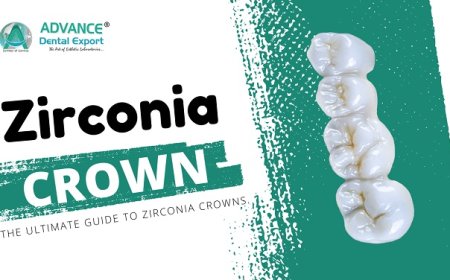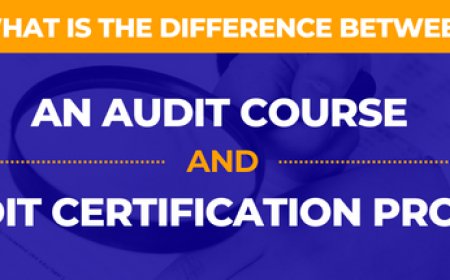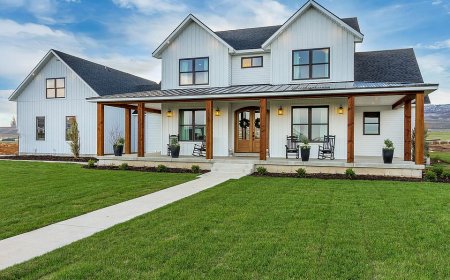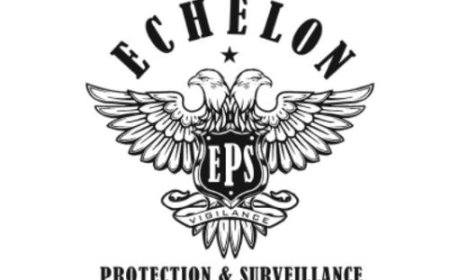How to Create Linkedin Business Page
How to Create a LinkedIn Business Page LinkedIn has evolved from a simple professional networking platform into one of the most powerful digital marketing channels for businesses of all sizes. With over 1 billion members worldwide and millions of active decision-makers, LinkedIn offers unparalleled access to B2B audiences, industry influencers, potential clients, and top-tier talent. For any organ
How to Create a LinkedIn Business Page
LinkedIn has evolved from a simple professional networking platform into one of the most powerful digital marketing channels for businesses of all sizes. With over 1 billion members worldwide and millions of active decision-makers, LinkedIn offers unparalleled access to B2B audiences, industry influencers, potential clients, and top-tier talent. For any organization looking to build credibility, expand its reach, or establish thought leadership, a well-crafted LinkedIn Business Page is not optional—it’s essential.
A LinkedIn Business Page, formerly known as a Company Page, serves as the official digital storefront for your brand on LinkedIn. Unlike personal profiles, which are designed for individuals, Business Pages are built to showcase your company’s mission, values, products, services, culture, and achievements. They enable you to publish content, engage with followers, attract job candidates, generate leads, and track performance through analytics—all within a professional environment where business decisions are made.
Creating a LinkedIn Business Page is a straightforward process, but many organizations make critical mistakes that undermine its effectiveness. Simply setting up the page is only the first step. To truly leverage its potential, you must optimize every element—from the banner image to the “About” section—to align with your brand identity and marketing goals. This guide walks you through everything you need to know to create, optimize, and grow a high-performing LinkedIn Business Page that drives real business results.
Step-by-Step Guide
Step 1: Ensure You Have a Personal LinkedIn Profile
Before you can create a LinkedIn Business Page, you must have an active, complete personal LinkedIn profile. LinkedIn requires that Business Pages be created and managed by verified individual accounts. This ensures accountability and prevents spam or fraudulent pages from being created.
To verify your profile is ready:
- Use your real name and professional photo.
- Complete your headline, summary, and work experience sections.
- Ensure your profile is set to public visibility.
- Confirm your email address is verified.
If your profile is incomplete or flagged for suspicious activity, LinkedIn may block your ability to create a Business Page. Take a few minutes to review and polish your profile before proceeding.
Step 2: Navigate to the Create a Company Page Section
Log in to your personal LinkedIn account. Once logged in, click on the “Work” icon in the top navigation bar (it looks like a briefcase). From the dropdown menu, select “Create a Company Page.”
Alternatively, you can visit https://www.linkedin.com/company/setup/ directly in your browser. This will take you to the setup page where you can choose the type of page you want to create.
Step 3: Choose Your Page Type
LinkedIn offers two primary types of Business Pages:
- Company Page – Designed for businesses, organizations, or brands that offer products or services.
- Featured Employer Page – Tailored for organizations focused on recruitment and employer branding (this option is often available only to larger enterprises or those enrolled in LinkedIn Talent Solutions).
For most businesses, the “Company Page” is the correct choice. Select this option and proceed.
Step 4: Enter Your Company Information
LinkedIn will prompt you to enter your company’s details. Fill out each field accurately and completely:
- Company Name: Use your official, legal business name. Avoid abbreviations, acronyms, or creative spellings unless they are widely recognized (e.g., “IBM” instead of “International Business Machines”).
- Company Website: Enter your primary website URL. This should be the same domain used in your email signatures, marketing materials, and social profiles.
- Industry: Select the industry that best represents your core business from LinkedIn’s dropdown list. Be specific—choosing “Marketing and Advertising” instead of “Business” improves discoverability.
- Company Size: Select the number of employees that best matches your current headcount. This helps LinkedIn tailor content recommendations and audience targeting.
- Company Type: Choose whether your business is public, private, non-profit, or a government entity.
- Location: Enter your headquarters’ physical address. You can add additional locations later if you operate in multiple regions.
Accuracy here is critical. Inconsistent or incorrect information can confuse followers, harm your SEO, and reduce trust. Double-check all entries before clicking “Create Page.”
Step 5: Customize Your Page URL
After your page is created, LinkedIn will assign a default URL such as linkedin.com/company/123456789. This is not ideal for branding or sharing.
To customize your URL:
- Go to your new Company Page.
- Click “Edit public profile & URL” on the right-hand sidebar.
- Under “Edit your custom URL,” click the pencil icon.
- Enter a clean, professional URL like
linkedin.com/company/yourbrandname.
Custom URLs are easier to remember, look more professional on marketing materials, and improve SEO. If your preferred name is taken, try variations like “yourbrandhq,” “yourbrandofficial,” or “yourbrandglobal.” Avoid numbers or hyphens if possible.
Step 6: Upload Your Company Logo and Banner Image
Your visual branding is the first thing visitors notice. Use high-resolution images that reflect your brand identity.
- Logo: Upload a square image (300 x 300 pixels minimum). Use your official logo in high quality. Avoid watermarks, text overlays, or decorative elements that don’t belong on your logo.
- Banner Image: Upload a horizontal image (1128 x 191 pixels). This is prime real estate for conveying your value proposition, showcasing a product, highlighting a tagline, or featuring a team photo. Use brand colors, minimal text, and high-quality visuals. Avoid cluttered designs.
LinkedIn will automatically crop and resize your images, so test how they appear on mobile and desktop before finalizing. Use tools like Canva or Adobe Express to design banner images that meet LinkedIn’s specifications.
Step 7: Write a Compelling “About” Section
The “About” section is your most important text element on the page. It appears in search results, on your profile, and in LinkedIn’s algorithm-driven recommendations. It must be clear, concise, and keyword-rich.
Structure your “About” section using the following framework:
- First Paragraph: Define your company in one sentence. Who are you? What do you do? Who do you serve? Example: “We empower mid-sized SaaS companies to scale customer acquisition through AI-driven marketing automation.”
- Second Paragraph: Expand on your mission, values, and unique differentiators. Why should someone choose you over competitors?
- Third Paragraph: Highlight key offerings, products, or services. Use bullet points for readability.
- Fourth Paragraph: Include a call to action (CTA). Invite visitors to follow your page, visit your website, apply for jobs, or contact your team.
Use keywords naturally throughout the text—terms your ideal customers might search for, such as “digital marketing agency,” “cloud infrastructure solutions,” or “HR compliance software.” Avoid keyword stuffing; prioritize clarity and human readability.
Step 8: Add Featured Content
LinkedIn allows you to pin up to three pieces of content to the top of your Company Page. This is a powerful way to highlight your best content, promotions, or announcements.
Choose content that:
- Highlights a recent product launch or major milestone.
- Shares a case study or client success story.
- Promotes a free resource (e.g., ebook, webinar, tool).
To add featured content:
- Go to your Company Page.
- Scroll to the “Featured” section below the banner.
- Click “Add featured content.”
- Select from your posts, articles, or external links.
- Click “Save.”
Update these regularly—every 4–6 weeks—to keep your page fresh and relevant.
Step 9: Add Products and Services
If your business offers specific products or services, list them under the “Products & Services” section. This helps users understand your offerings at a glance and improves search visibility.
To add products or services:
- Go to your Company Page.
- Click “Products & Services” under the banner.
- Click “Add a product or service.”
- Enter the name, description (up to 1,000 characters), and website link (if applicable).
- Add a photo for each product (recommended: 1200 x 627 pixels).
- Click “Save.”
Limit your list to 5–8 core offerings. Too many options can overwhelm visitors. Focus on what drives revenue or differentiates you.
Step 10: Invite Employees to Follow and Advocate
One of the most underrated strategies for growing your LinkedIn Business Page is encouraging employees to follow it and share its content.
Employees act as brand ambassadors. Their networks extend far beyond your company’s direct followers. When they engage with your posts, like, comment, or share them, LinkedIn’s algorithm amplifies your reach.
To invite employees:
- Go to your Company Page.
- Click “Followers” under the banner.
- Click “Invite employees to follow.”
- LinkedIn will show you a list of employees who have your company listed in their profile.
- Select the ones you want to invite and click “Send.”
Also, create an internal communication (email or Slack message) explaining why following the page matters and how they can help. Provide pre-written captions they can use when sharing posts.
Step 11: Connect Your LinkedIn Page to Other Platforms
Integrate your LinkedIn Business Page with your other digital assets to create a unified brand presence:
- Add your LinkedIn URL to your website’s footer, contact page, and social media bios.
- Link your LinkedIn Page in email signatures.
- Embed your LinkedIn feed on your website using LinkedIn’s official plugin.
- Sync your LinkedIn content with your blog or newsletter using tools like Zapier or Hootsuite.
Consistency across platforms builds trust and makes it easier for your audience to find you.
Step 12: Enable Analytics and Monitor Performance
LinkedIn provides robust analytics for Business Pages. Access them by clicking “Analytics” on your Company Page.
Key metrics to track:
- Follower demographics: Location, industry, job function, seniority.
- Page views: How many people are visiting your page.
- Post engagement: Likes, comments, shares, clicks.
- Visitor demographics: Who’s viewing your content beyond your followers.
- Competitor comparison: How you stack up against similar companies.
Review analytics monthly. Identify top-performing content and double down on those formats. Adjust posting times, topics, and CTAs based on data—not guesswork.
Best Practices
Post Consistently and Strategically
Consistency trumps frequency. Posting 2–3 times per week with high-quality content is far more effective than daily low-effort updates. Create a content calendar that aligns with your business goals:
- Monday: Industry insights or trend analysis.
- Wednesday: Employee spotlight or behind-the-scenes content.
- Friday: Client success story or testimonial.
Use a mix of formats: text posts, images, carousels, videos, polls, and documents. Videos and carousels consistently outperform static images in engagement.
Engage, Don’t Just Broadcast
A LinkedIn Business Page is not a billboard. It’s a conversation. Respond to every comment on your posts. Ask questions in your captions. Tag relevant partners or clients. Join industry groups and contribute meaningfully.
Engagement signals to LinkedIn’s algorithm that your content is valuable, increasing its reach. Ignore comments, and your content will stagnate.
Use Keywords for SEO
LinkedIn is a search engine as much as a social network. Optimize your page for search by incorporating keywords naturally into:
- Your Company Name (if possible)
- Your “About” section
- Your Products & Services descriptions
- Your post captions and headlines
Use tools like Google Keyword Planner, Ubersuggest, or LinkedIn’s own search bar to find what your audience is typing. For example, if you’re a cybersecurity firm, target phrases like “enterprise cybersecurity solutions,” “data breach prevention,” or “compliance audit services.”
Highlight Social Proof
People trust people. Showcase:
- Client logos or testimonials in your banner or featured posts.
- Case studies with measurable results (e.g., “Helped XYZ Corp reduce costs by 40%”).
- Employee endorsements and recommendations.
- Media mentions or industry awards.
Visual social proof (like logos) increases credibility more than text alone.
Optimize for Mobile
Over 60% of LinkedIn users access the platform via mobile devices. Ensure your images, videos, and text are legible and impactful on small screens. Avoid small fonts or dense paragraphs. Use short sentences and bullet points.
Run Targeted Campaigns
Once your page is established, consider using LinkedIn Ads to promote high-value content. Use Sponsored Content to boost posts to specific job titles, industries, or company sizes. Use Lead Gen Forms to capture contact information directly within LinkedIn.
Start small: promote one top-performing organic post to a narrow audience. Track conversions. Scale what works.
Update Regularly
Outdated information kills trust. Review your page quarterly:
- Update your “About” section if your offerings change.
- Refresh your banner image seasonally or for campaigns.
- Remove outdated featured content.
- Ensure all links are active.
Tools and Resources
Design Tools
- Canva – Free and paid templates for LinkedIn banners, carousels, and profile images.
- Adobe Express – Professional-grade design with brand kit integration.
- Snappa – Quick social media graphics with drag-and-drop editing.
Content Planning & Scheduling
- Hootsuite – Schedule posts, monitor mentions, and track analytics across platforms.
- Buffer – Simple interface for scheduling LinkedIn content with performance insights.
- Later – Visual content calendar ideal for planning image-heavy campaigns.
- Notion – Build a customizable content calendar with templates for LinkedIn strategy.
Analytics & Optimization
- LinkedIn Analytics Dashboard – Native tool for tracking follower growth, engagement, and demographics.
- Google Analytics – Track traffic from LinkedIn to your website using UTM parameters.
- SEMrush – Monitor keyword rankings for your company name and industry terms on LinkedIn search.
- Ahrefs – Analyze backlinks and content performance from LinkedIn shares.
Content Inspiration
- LinkedIn Newsroom – Official blog with case studies and best practices from top brands.
- HubSpot’s LinkedIn Blog – Actionable tips for B2B marketers.
- Social Media Today – Industry news and platform updates.
- Competitor Pages – Study 3–5 companies in your niche. What content performs well? What’s missing?
Free Templates
Download free, editable templates for:
- LinkedIn content calendar
- Post caption framework
- “About” section checklist
- Employee advocacy guide
Many of these are available through HubSpot, Hootsuite, and LinkedIn’s own marketing resources.
Real Examples
Example 1: HubSpot
HubSpot’s LinkedIn page is a masterclass in B2B branding. Their banner features a clean, benefit-driven headline: “Grow Better with HubSpot.” The “About” section clearly defines their mission, products, and audience. They post daily with a balanced mix of educational content, customer stories, and culture highlights. Their use of video tutorials, carousel posts, and employee testimonials drives consistent engagement. They also regularly feature user-generated content, making followers feel part of the community.
Example 2: Adobe
Adobe leverages its Creative Cloud ecosystem effectively. Their page highlights product launches with stunning visuals, behind-the-scenes creative processes, and user-generated art. They use LinkedIn to position themselves not just as a software company, but as a catalyst for creativity. Their “Products & Services” section is detailed and well-organized. They also run targeted campaigns promoting free trials and educational resources, resulting in high lead conversion rates.
Example 3: Buffer
Buffer, a social media management tool, stands out for its transparency and authenticity. Their page shares internal company updates, salary data, and team culture—rare for B2B brands. Their content is conversational, humble, and highly relatable. They post fewer times per week but with exceptional quality. Their engagement rates are among the highest in their category because they prioritize human connection over promotional messaging.
Example 4: Shopify
Shopify’s page targets entrepreneurs and small business owners. They use storytelling to highlight real business owners who succeeded using their platform. Their featured content includes success stories, webinars, and downloadable guides. Their “About” section is benefit-focused: “Start, run, and grow your business with Shopify.” They optimize for keywords like “e-commerce platform,” “online store builder,” and “small business tools.” Their consistent use of real people and real results builds trust and authority.
Example 5: Local Small Business – “GreenLeaf Landscaping”
Even small businesses can thrive on LinkedIn. GreenLeaf Landscaping, a regional service provider, created a page focused on commercial clients. Their banner shows before-and-after lawn transformations. Their “About” section highlights sustainability practices and commercial contracts. They post weekly photos of completed projects, client testimonials, and seasonal maintenance tips. Their page ranks for local searches like “commercial landscaping services [City].” Within six months, they generated 37 qualified leads directly from LinkedIn.
FAQs
Can I create a LinkedIn Business Page without a personal profile?
No. LinkedIn requires that every Business Page be created and managed by a verified personal profile. You must have an active, complete personal account to proceed.
Is there a cost to create a LinkedIn Business Page?
No. Creating and maintaining a LinkedIn Business Page is completely free. However, LinkedIn offers paid advertising and recruitment tools (like LinkedIn Talent Solutions) that can enhance your reach and functionality.
How many employees should I have to create a Business Page?
There is no minimum employee requirement. Even solopreneurs and freelancers can create a Business Page to represent their brand. However, if you’re a sole proprietor, consider whether a personal profile might be more appropriate unless you plan to scale.
Can I have multiple LinkedIn Business Pages for different brands?
Yes. You can create and manage multiple Business Pages using the same personal profile, as long as each represents a distinct legal entity or brand. Ensure each page has unique branding and content to avoid confusion.
How long does it take for a LinkedIn Business Page to appear in search results?
It typically takes 24–72 hours for your page to be indexed by LinkedIn’s search engine. However, full SEO visibility across external search engines like Google may take up to two weeks, depending on content quality and backlinks.
What happens if I delete my personal profile? Will my Business Page be deleted too?
Yes. Your personal profile is the administrator of your Business Page. If you delete your profile, the page will be deactivated. To avoid this, assign a secondary admin before deleting your personal account.
Can I change my Company Name after creating the page?
You can update your company name, but LinkedIn requires verification. Go to your page settings, edit the name, and submit a request. LinkedIn may ask for official documentation (like a business license) to approve the change.
How do I add more administrators to my Business Page?
Go to your Company Page > “Admin Tools” > “Page Admins.” Click “Add Admin” and enter the email or LinkedIn profile of the person you want to add. They must accept the invitation to gain access.
Should I use my company email for my personal profile when creating the page?
It’s recommended. Using a company email (e.g., john@yourcompany.com) adds legitimacy and makes it easier to transfer page ownership if the person managing the page leaves the organization.
Can I merge two LinkedIn Business Pages?
LinkedIn does not offer a direct merge feature. If you have duplicate pages, choose one to keep, update it with all information, then request LinkedIn to remove the duplicate by contacting their support team through the Help Center.
Conclusion
Creating a LinkedIn Business Page is one of the most impactful steps you can take to establish your brand’s professional presence online. It’s not just about setting up a profile—it’s about building a digital hub that attracts clients, inspires employees, and positions your company as a leader in your industry.
By following the step-by-step guide outlined here, you’ve laid the foundation for a high-performing page. But your work doesn’t end with creation. Success on LinkedIn comes from consistency, authenticity, and continuous optimization. Post valuable content. Engage with your audience. Analyze your results. Adapt and evolve.
Remember: Your LinkedIn Business Page is a living entity. It should reflect your brand’s growth, values, and achievements. The companies that thrive on LinkedIn aren’t the ones with the biggest budgets—they’re the ones that show up regularly, speak with purpose, and listen to their audience.
Start today. Optimize tomorrow. Grow relentlessly. Your next client, partner, or employee is waiting on LinkedIn—and your Business Page is the doorway they’ll walk through.

























